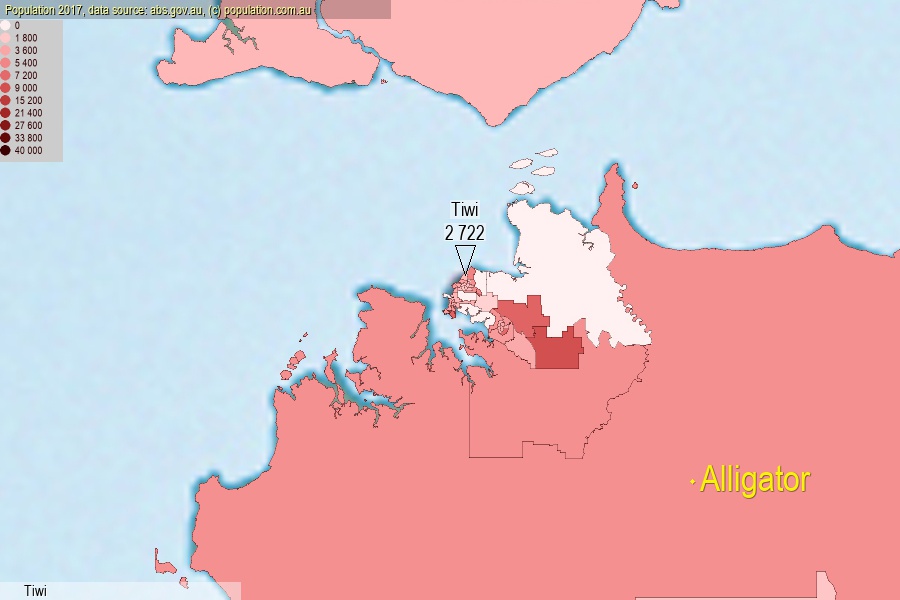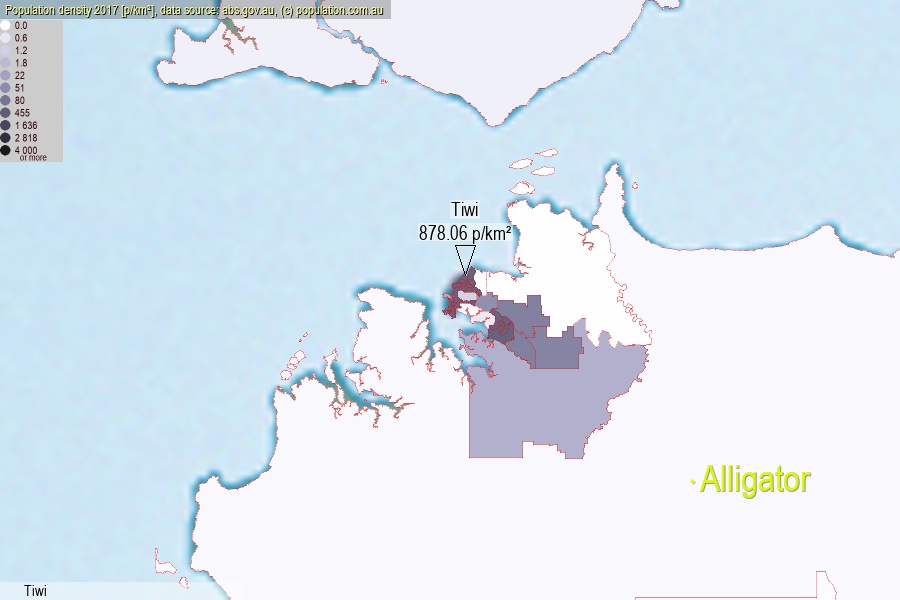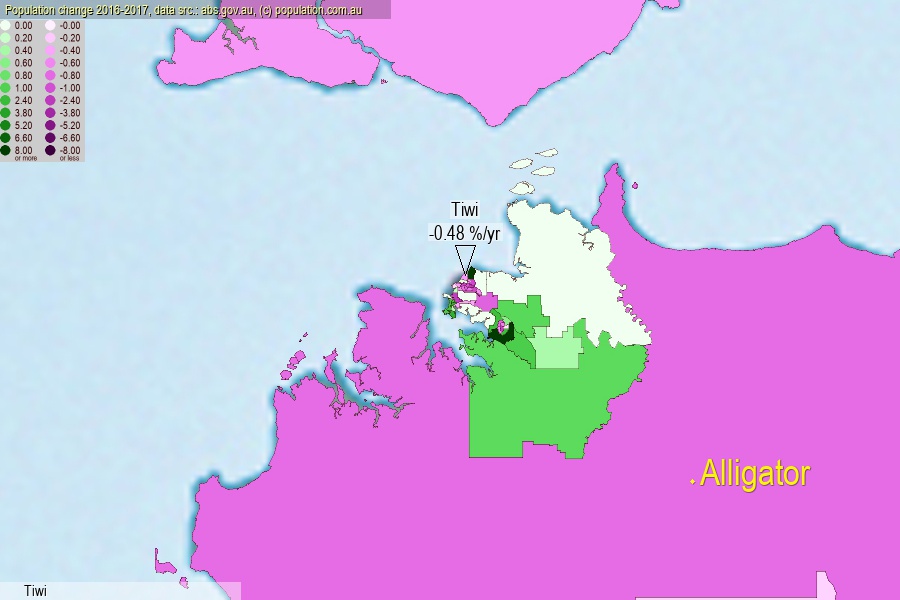 population.com.au
population.com.auLast official estimated population of Tiwi (as Statistical Area Level 2) was 2 722 people (on 2017-06-30)[2]. This was 0.01% of total Australian population and 1.103% of NT population. Area of Tiwi is 3.10 km², in this year population density was 878.06 p/km² . If population growth rate would be same as in period 2016-2017 (-0.48%/yr), Tiwi population in 2025 would be 2 620. [0]



Click to enlarge. Tiwi is located in the center of the images.
Population [people], population density [p./km²] and population change [%/year] [2]
View borders » (new window) [4]
[1991-1992] -0.37 %/Yr.
[1992-1993] -0.86 %/Yr.
[1993-1994] -0.30 %/Yr.
[1994-1995] +1.70 %/Yr.
[1995-1996] +1.71 %/Yr.
[1996-1997] -0.11 %/Yr.
[1997-1998] -1.50 %/Yr.
[1998-1999] -0.96 %/Yr.
[1999-2000] +0.11 %/Yr.
[2000-2001] -0.30 %/Yr.
[2001-2002] -0.60 %/Yr.
[2002-2003] +0.42 %/Yr.
[2003-2004] +1.39 %/Yr.
[2004-2005] +0.41 %/Yr.
[2005-2006] -0.48 %/Yr.
[2006-2007] +0.22 %/Yr.
[2007-2008] -0.11 %/Yr.
[2008-2009] -0.44 %/Yr.
[2009-2010] +0.07 %/Yr.
[2010-2011] +0.30 %/Yr.
[2011-2012] +1.82 %/Yr.
[2012-2013] +2.00 %/Yr.
[2013-2014] -0.68 %/Yr.
[2014-2015] -0.72 %/Yr.
[2015-2016] -0.91 %/Yr.
[2016-2017] -0.48 %/Yr.
[0] Calculated with linear interpolation from officially estimated population
[1] Read more about SA2 and Australian Statistical Geography Standard (ASGS) on abs.gov.au
[2] Population data from Australian Bureau of Statistics (Population and density: 2017; change: 2016-2017)
[3] Digital Boundaries: Australian Statistical Geography Standard (ASGS) 2016.
[4] Border coordinates are simplifyed using Ramer-Douglas-Peucker algorithm.